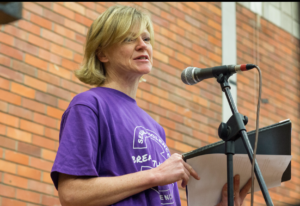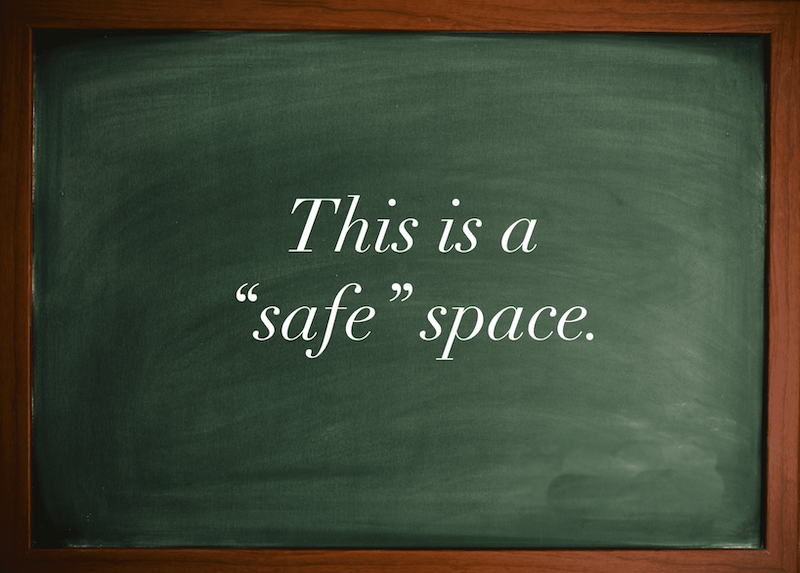By KIM BARKER, Pastoral Therapist, Sexual Violence Researcher in Critical Studies in Sexualities and Reproduction, Rhodes University
The current heightened awareness of child sexual abuse resulting from high-profile cases at local schools has many people talking about creating ‘safe spaces’ where young people can disclose sexual abuse. It seems helpful to unpack what that means and what ‘safe spaces’ may look like.
I want to state upfront that just because it is currently in the news, abuse of children is not increasing or getting worse – sadly, it has always happened. There are simply more channels now for investigating and communicating cases.

With cognitive processing still developing and innate trust in the goodness of the world until proven otherwise, children have always been vulnerable to manipulation, coercion, and abuse at the hands of older children or adults.
That is why they are targeted. And that is why many abusers get away with it for so long.
They construct an alternative reality for the child in which what they are doing is normalised and acceptable, framed often as some kind of ‘special relationship’. So even when the child feels uncomfortable, they make sense of their feelings about this alternative reality.
And when the cracks start showing, abusers turn to guilt, shame and threats as other silencing methods. These are some of the reasons that most children do not speak out about what is happening.
Actually, let me correct that.
Many children do try to tell at least one person, but their disclosures are often missed completely, minimised, ignored, or brushed aside.
It is said that children are often not believed. I think it is far more complex than that. In the same way a child might find it challenging to realise and name what is happening to them as wrong, adults are also often drawn into the alternative reality of the abuser by their charm, helpfulness or apparent care for the child and the family. This is another deliberate strategy to gain access to the child and avoid detection.
In the all-too-frequent situation where the abuser is a family member, a long-standing, trusting relationship with the abuser may get in the way of believing the child.
Sometimes, however, I think that the adults to whom a child discloses or tries to reveal something of what is happening may realise that the story is true.
However, with full awareness of the implications of believing the story, what will be required of them, and the child and many others, if they do believe it, they choose to rather shut down the telling immediately with dismissive disbelief. Every adult who does this fails the child who sought their help.
So, what does ‘creating a safe space’ mean in contexts like this?
Ideally, the first safe space would be trusted people within one’s home environment, and there is much we can do as parents to facilitate this, but in many instances, the home may be the most unsafe space.
Thus, the responsibility falls on the institutions in the broader society to create and offer these ‘safe spaces’ for those who have experienced abuse or violation to disclose and seek help.
What is needed for these to be spaces that will be recognised, trusted and accessed? What does ‘safe’ mean to someone who has experienced abuse?
Safe means that we have to find the courage to talk about sex and sexuality more in our homes, faith communities, and schools. We need to demystify it as a topic of discussion. If we cannot talk openly and without discomfort about our bodies, their needs, their quirks and their pleasures under everyday circumstances, how will our children even have the language to name a violation if it happens?
We also need to talk openly and frankly about the fact that there will be people who do not respect their bodies and boundaries and what they could do if that happened.
We need to teach children to trust their gut instinct, and if something that someone is doing feels uncomfortable to them, in any way, they should get out of the situation as soon as they possibly can and check it out with an adult they trust.
We need to tell children that we will believe what they tell us and that we will be okay, no matter what they share – children often do not disclose because they believe they are protecting those they love. When any talk related to bodies and sex is, at best, awkward and, at worst, taboo, our children will seek out their information elsewhere. They will not feel safe sharing uncomfortable or traumatic experiences.
If a child does choose to disclose, safe means, first of all, that the person they choose to tell will give them time, pay attention, listen deeply and try to understand. The person receiving the story needs to put aside their own emotional reactions to what they are hearing and focus on the needs of the one disclosing.
Safe means that we listen to more than what can be immediately spoken. Trauma and the confusion that follows can make it difficult to tell a story in a logical, linear way. Safe means asking gentle questions to help the person disclosing tell their story.
Safe means that we assume the story to be true, and we let them know we assume the story to be true, no matter what questions, fears, or uncertainties arise within us at that moment.
Safe means that having heard the story and responded to the emotion (or lack thereof – emotion isn’t required to ‘prove’ the truth of a story), we ask the person who told you the story what they need most in that moment. And we discuss and negotiate the way forward. And we walk every step of that with them. Or we make sure there is someone else who will.
Safe means not immediately assuming that the person disclosing is broken or damaged and responding to them with pity or panic. Safe means staying calm, responding with compassion and listening some more.
Safe means that we ensure that the person disclosing is safe and remains safe as a priority. We take the disclosure seriously and put steps in motion to address it, no matter how hard or costly those steps may be for us.
Safe means protecting that person’s trust with everything we have. If a child discloses, there are legal requirements in terms of reporting, as Kaitlin Yendall outlines so clearly in her article. Still, we need to discuss every step with the child who has disclosed and prioritise their wellbeing. It can be a further trauma, as harmful as the violation itself if the person disclosing loses control of their own story and what happens next is taken out of their hands. Respect and communication are essential, no matter how young or old the person disclosing happens to be.
Safe means that we offer the same kind of response and care every time someone discloses. Consistency is essential to building the credibility of any ‘safe space’. Trust is fragile when one has experienced its violation, and it takes enormous courage even to consider risking disclosure.
I fully agree that more safe spaces are needed for those who have experienced abuse or violation, but we don’t need to sit back and wait for someone with specialised knowledge to create them. Any person can offer what I have described above, and more of us need to be open to doing so within our circles of care and influence. We can connect the person to any specialised services they need, as they need them and accompany them in that process.



